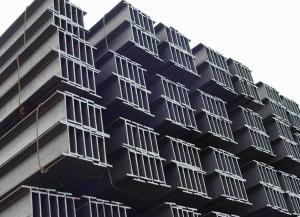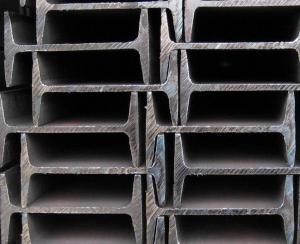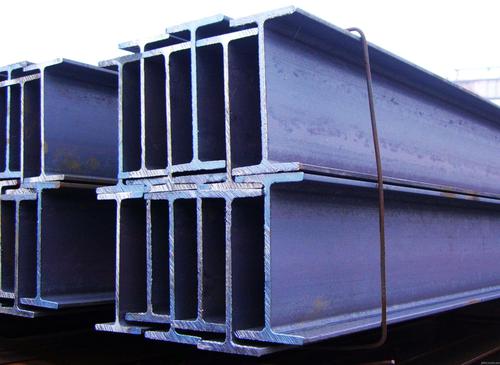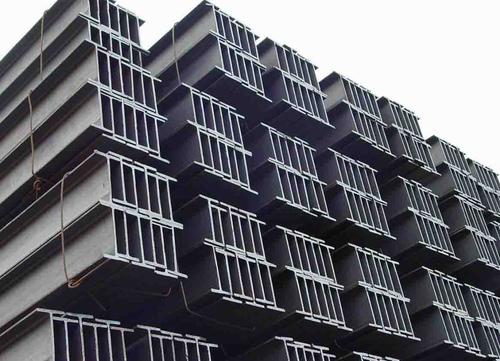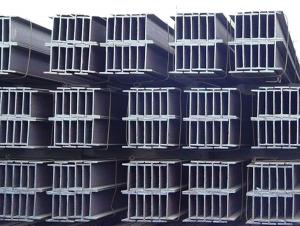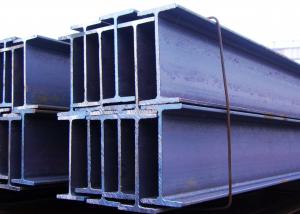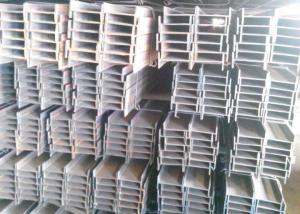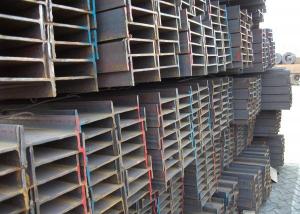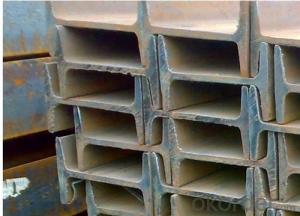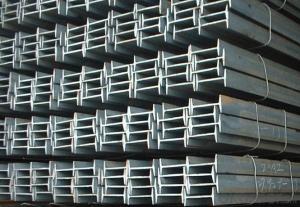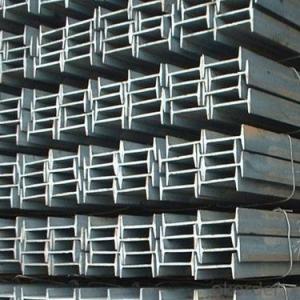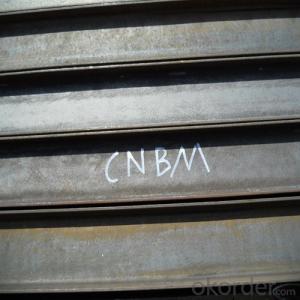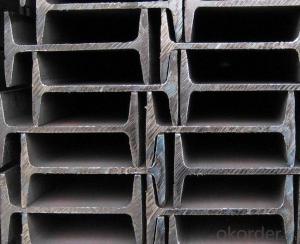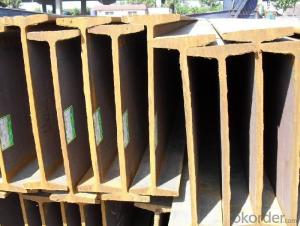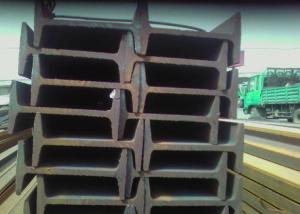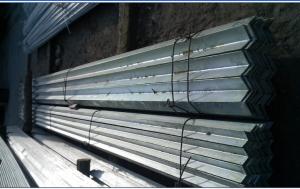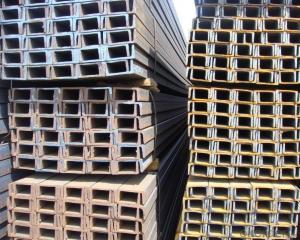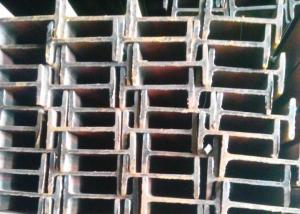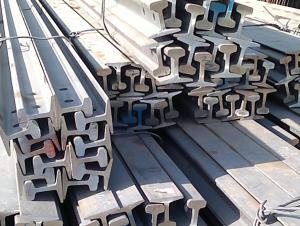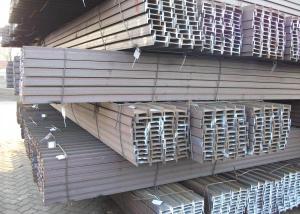IPE/IPEAA Beam with Material Grade GB-Q235
- Loading Port:
- Tianjin
- Payment Terms:
- TT OR LC
- Min Order Qty:
- 25 m.t.
- Supply Capability:
- 10000 m.t./month
OKorder Service Pledge
OKorder Financial Service
You Might Also Like
Product Description:
OKorder is offering high quality Hot Rolled Steel I-Beams at great prices with worldwide shipping. Our supplier is a world-class manufacturer of steel, with our products utilized the world over. OKorder annually supplies products to European, North American and Asian markets. We provide quotations within 24 hours of receiving an inquiry and guarantee competitive prices.
Product Applications:
1. Supporting members, most commonly in the house raising industry to strengthen timber bears under houses. Transmission line towers, etc
2. Prefabricated structure
3. Medium scale bridges
4. It is widely used in various building structures and engineering structures such as roof beams, bridges, transmission towers, hoisting machinery and transport machinery, ships, industrial furnaces, reaction tower, container frame and warehouse etc.
Product Advantages:
OKorder's Steel I-Beams are durable, strong, and resist corrosion.
Main Product Features:
· Premium quality
· Prompt delivery & seaworthy packing (30 days after receiving deposit)
· Corrosion resistance
· Can be recycled and reused
· Mill test certification
· Professional Service
· Competitive pricing
Product Specifications:
1. Invoicing on theoretical weight or actual weight as customer request
2. Standard: EN10025, GB Standard, ASTM
3. Grade: Q235B, Q345B, SS400, ASTM A36, S235JR, S275JR
4. Length: 5.8M, 6M, 9M, 12M as following table
5. Sizes: 80mm-270mm
Dimensions(mm) | |||||
h | b | s | t | Mass Kg/m | |
IPE80 | 80 | 46 | 3.80 | 5.20 | 6.00 |
IPE100 | 100 | 55 | 4.10 | 5.70 | 8.10 |
IPE120 | 120 | 64 | 4.80 | 6.30 | 10.40 |
IPE140 | 140 | 73 | 4.70 | 6.90 | 12.90 |
IPE160 | 160 | 82 | 5.00 | 7.40 | 15.80 |
IPE180 | 180 | 91 | 5.30 | 8.00 | 18.80 |
IPE200 | 200 | 100 | 5.60 | 8.50 | 22.40 |
IPE220 | 220 | 110 | 5.90 | 9.20 | 26.20 |
IPE240 | 240 | 120 | 6.20 | 9.80 | 30.70 |
IPE270 | 270 | 135 | 6.60 | 10.20 | 36.10 |
FAQ:
Q1: Why buy Materials & Equipment from OKorder.com?
A1: All products offered byOKorder.com are carefully selected from China's most reliable manufacturing enterprises. Through its ISO certifications, OKorder.com adheres to the highest standards and a commitment to supply chain safety and customer satisfaction.
Q2: How do we guarantee the quality of our products?
A2: We have established an advanced quality management system which conducts strict quality tests at every step, from raw materials to the final product. At the same time, we provide extensive follow-up service assurances as required.
Q3: How soon can we receive the product after purchase?
A3: Within three days of placing an order, we will begin production. The specific shipping date is dependent upon international and government factors, but is typically 7 to 10 workdays.
Images:
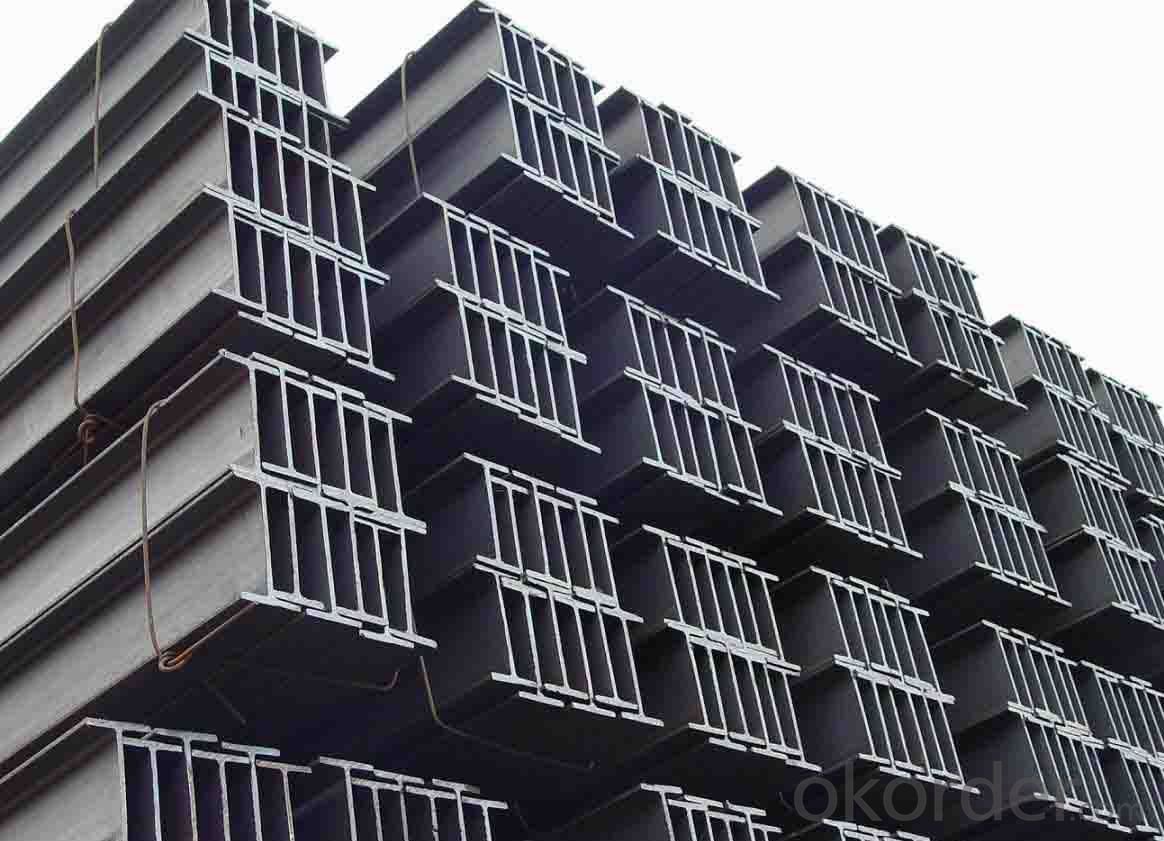
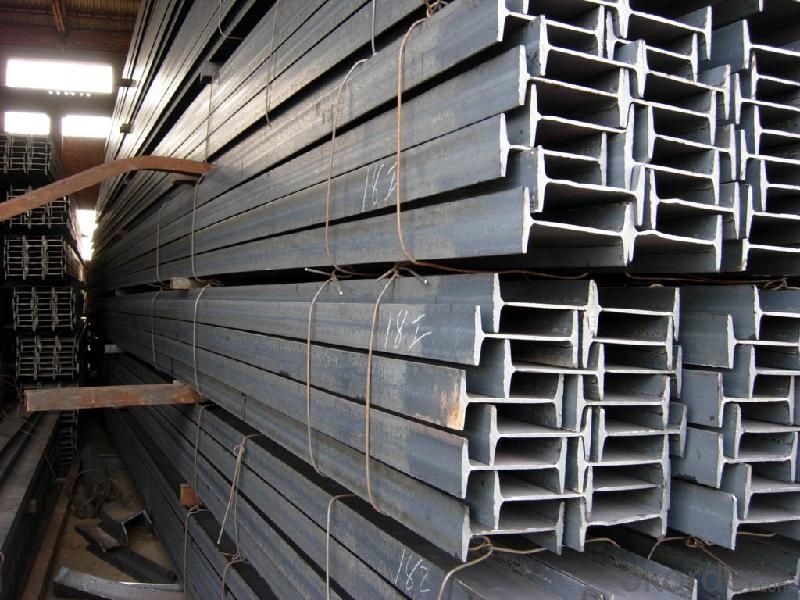
- Q: Can steel I-beams be used in retail or shopping center construction?
- Indeed, retail or shopping center construction can incorporate steel I-beams. These beams are frequently utilized in commercial construction endeavors owing to their robustness, longevity, and adaptability. They furnish the edifice with structural reinforcement, facilitating more expansive open areas and accommodating various design possibilities. Moreover, steel I-beams possess fire-resistant properties, a crucial safety attribute in the realm of retail and shopping center construction. Ultimately, due to their structural soundness and capacity to fulfill the distinct requirements of these structures, steel I-beams represent a superb selection for retail or shopping center construction.
- Q: How do I calculate the difference between rail steel and angle steel, channel steel and I-beam?
- Ordinary I-beam, light I-beam flange is variable cross-section, depending on the thickness of the web, the external thin; H steel: HW, HM, HN, HEA, HEB, HEM and so on, the flange of I-beam is a uniform sectionOrdinary I-beam, lightweight I-beam has formed the national standard, the common 10# I-beam is equivalent to the Internet I100 (such as 10# also channel equivalent channel (U100) for the implementation of the standards of different countries, which have subtle differences in their specifications)H type I-beam is also called wide flange I-beam, HW, HM, HN originated from European standards, HEB is the German standard of I-beam, of which HW, HN I-beam has been widely used in our country and production. HEA HEB HEM will be seen on many German designs and is hard to buy on the domestic market. In the domestic steel structure engineering, if the quantity is few, then may use the specification steel plate to carry on the welding splicing. In the case of large quantities, it is usually considered to use mechanical properties comparable to those of HW and HN steel.
- Q: How do steel I-beams perform in terms of deflection?
- Steel I-beams are known for their excellent performance in terms of deflection. Due to their high strength and stiffness, they are able to resist bending and deflection, making them ideal for supporting heavy loads and spanning long distances without significant sagging or deformation.
- Q: Can steel I-beams be used for overhead crane runways?
- Certainly! Overhead crane runways can indeed utilize steel I-beams. These beams, renowned for their robustness and endurance, are widely employed in construction. They possess a specialized design enabling them to withstand substantial loads and offer structural reinforcement. When employed for overhead crane runways, steel I-beams furnish a dependable and steadfast groundwork for the crane system. Nonetheless, it is crucial to ascertain that the I-beams are accurately sized and installed to meet the precise demands of both the crane and the loads it will bear. Furthermore, routine inspections and upkeep should be undertaken to safeguard the longevity and integrity of the I-beams.
- Q: What are the factors to consider when designing steel I-beams for crane loads?
- When it comes to designing steel I-beams for crane loads, there are multiple crucial factors that need to be taken into consideration. These factors encompass the load capacity requirements, the operating conditions of the crane, the structural properties of the beam, and the safety measures. The first and foremost aspect to be thoroughly examined is the load capacity requirements. This entails determining the maximum weight that the crane will be required to lift, as well as the maximum span or distance between supports that the beam needs to cover. These parameters will dictate the necessary size and strength of the I-beam. Moving forward, the operating conditions of the crane must also be given careful consideration. This includes taking into account factors such as the frequency and duration of crane usage, the type of materials being lifted, and any potential dynamic loads or impacts that may occur during operation. These factors will have an impact on the fatigue life and overall durability of the beam, necessitating their careful evaluation. The structural properties of the I-beam also play a crucial role in ensuring its performance and safety. The material grade, cross-sectional shape, and dimensions of the beam must be carefully selected to withstand the applied loads. Additionally, the beam's moment of inertia and section modulus should be calculated to ensure that it can resist bending and deflection within permissible limits. Lastly, it is essential to incorporate safety factors into the design. This involves applying appropriate load factors and safety margins to account for uncertainties and potential overloading. Both static and dynamic loads should be taken into consideration, along with any other external factors that may impact the beam's performance. In conclusion, the design of steel I-beams for crane loads necessitates a comprehensive analysis of load capacity requirements, operating conditions, structural properties, and safety measures. By carefully considering these factors, engineers can ensure that the I-beam is appropriately sized, sufficiently strong to withstand the applied loads, and safe for crane operations.
- Q: Can Steel I-Beams be used for power plants?
- Yes, steel I-beams can be used for power plants. Steel I-beams are commonly used in construction due to their structural strength and load-bearing capacity. In power plants, where heavy machinery and equipment are involved, steel I-beams can provide the necessary support and stability. These beams can be used for various applications in power plants, including supporting turbines, generators, boilers, and other critical components. Additionally, steel I-beams have excellent resistance to heat and can withstand high temperatures, making them suitable for power plants where thermal energy is involved.
- Q: What are the different types of steel I-beam connections for staircases?
- There are several types of steel I-beam connections commonly used in staircases. These connections are crucial for ensuring the stability and strength of the staircase structure. Here are some of the different types: 1. Welded Connection: This is the most common type of connection used in steel staircases. It involves welding the I-beam to the stringers or other supporting members. Welding provides a strong and durable connection, ensuring the stability of the staircase. 2. Bolted Connection: In this type of connection, the I-beam is bolted to the stringers or other supporting members using high-strength bolts. Bolted connections are convenient as they allow for easy disassembly and reassembly if required. However, they may not be as strong as welded connections. 3. Cleat Connection: A cleat is a steel plate that is bolted to the underside of the I-beam and attached to the stringers or other supporting members. This connection provides additional support and stability to the staircase. 4. Plate Connection: This type of connection involves using steel plates to connect the I-beam to the stringers or other supporting members. The plates are typically welded or bolted to both the I-beam and the supporting members, ensuring a secure connection. 5. Beam-Column Connection: In some staircases, the I-beam may need to be connected to a vertical column for added support. This connection is typically achieved through welding or bolting, depending on the specific design requirements. It is important to note that the choice of steel I-beam connection for a staircase depends on various factors such as the load-bearing capacity, design requirements, and construction methods. Consulting with a structural engineer or a professional staircase designer is recommended to ensure the appropriate connection type is selected to meet the specific needs of the staircase project.
- Q: Can steel I-beams be used in hotels or hospitality buildings?
- Hotels and hospitality buildings can indeed make use of steel I-beams. These beams are widely used in the construction industry due to their remarkable strength and durability. They offer exceptional structural support, making them highly suitable for large-scale structures like hotels. Steel I-beams have the capacity to bear heavy loads and span long distances, allowing for the creation of flexible and spacious floor plans commonly found in hotels. Moreover, steel is resistant to fire, pests, and rot, making it a reliable and secure choice for construction. By incorporating steel I-beams into hotels and hospitality buildings, one can ensure the safety and longevity of the structure while also facilitating various architectural designs.
- Q: Are steel I-beams resistant to electromagnetic radiation?
- Steel I-beams do not possess inherent resistance to electromagnetic radiation. Electromagnetic radiation encompasses a vast array of frequencies, encompassing radio waves, microwaves, infrared, visible light, ultraviolet, X-rays, and gamma rays. Due to steel's excellent conductivity of electricity, it can, in fact, amplify certain types of electromagnetic radiation, like radio waves and microwaves. Nevertheless, steel I-beams can offer partial shielding against specific frequencies of electromagnetic radiation, particularly in the lower frequency range. For instance, they can provide some defense against radio waves and microwaves, but their effectiveness diminishes as the frequency increases. Blocking higher frequency radiation, such as X-rays and gamma rays, is generally not within the capabilities of steel I-beams. To enhance resistance to electromagnetic radiation, additional measures can be implemented, such as incorporating electromagnetic shielding materials or coatings onto the steel beams. These materials aid in attenuating or redirecting the electromagnetic waves, thereby reducing their penetration through the steel I-beams. It is crucial to acknowledge that the required level of electromagnetic radiation resistance relies on the specific application and the desired degree of protection. Hence, seeking advice from experts in electromagnetic radiation shielding and considering specific requirements is advisable before finalizing the use of steel I-beams in situations where electromagnetic radiation protection is a concern.
- Q: What are the common challenges involved in working with steel I-beams?
- When dealing with steel I-beams, there are several challenges that one may encounter. One of the most common challenges is their weight and size. Steel I-beams are heavy and often require specialized equipment and machinery for transportation and installation, leading to logistical difficulties and increased project costs. Another challenge is their lack of flexibility. Although steel I-beams are known for their strength and durability, this rigidity can make it difficult to accommodate changes or modifications during construction. Any alterations may necessitate cutting, welding, or additional reinforcements, which can be time-consuming and expensive. Maintaining the structural integrity of steel I-beams is also a challenge. They are prone to corrosion, especially in high humidity or chemical-exposed environments. To prevent rust and ensure long-lasting durability, proper coating and regular maintenance are essential. Furthermore, the installation of steel I-beams often requires precise measurement and alignment to ensure proper load distribution and structural stability. Any inaccuracies or errors in measurement can result in structural issues or safety hazards. Fire resistance poses another challenge. Although steel I-beams have a high melting point, prolonged exposure to high temperatures can weaken their structural integrity. To mitigate this risk, fire-resistant coatings or additional fire protection measures are often necessary. Lastly, cost can be a significant challenge when working with steel I-beams. Steel is generally more expensive than other building materials, so budget constraints may limit their use in construction projects. Moreover, the fluctuating prices of steel can impact project budgets and timelines. In conclusion, while steel I-beams offer numerous advantages such as strength and durability, they also present challenges related to weight, rigidity, maintenance, alignment, fire resistance, and cost. Overcoming these challenges requires careful planning, expertise, and adherence to industry standards and best practices.
Send your message to us
IPE/IPEAA Beam with Material Grade GB-Q235
- Loading Port:
- Tianjin
- Payment Terms:
- TT OR LC
- Min Order Qty:
- 25 m.t.
- Supply Capability:
- 10000 m.t./month
OKorder Service Pledge
OKorder Financial Service
Similar products
Hot products
Hot Searches
Related keywords

